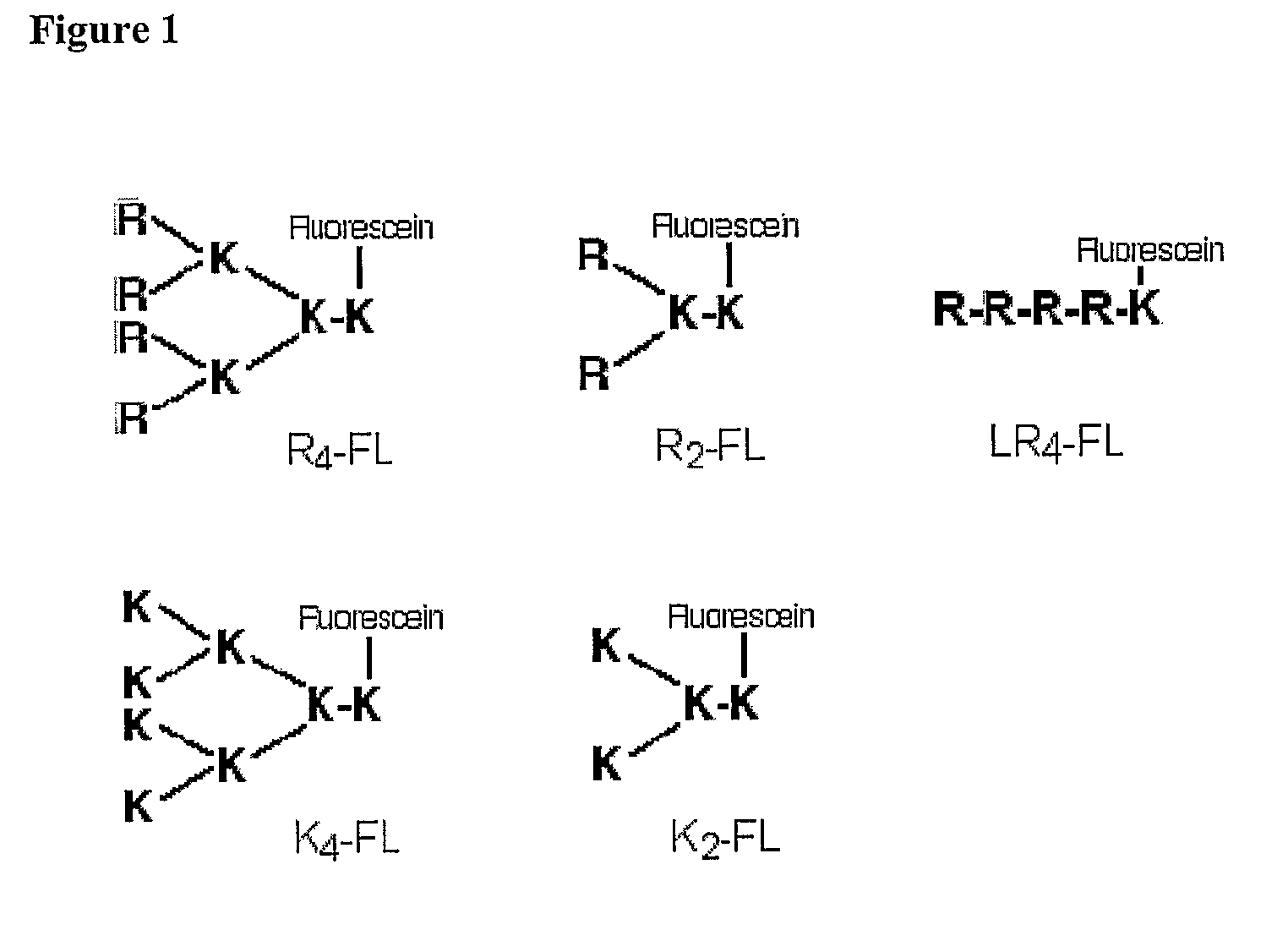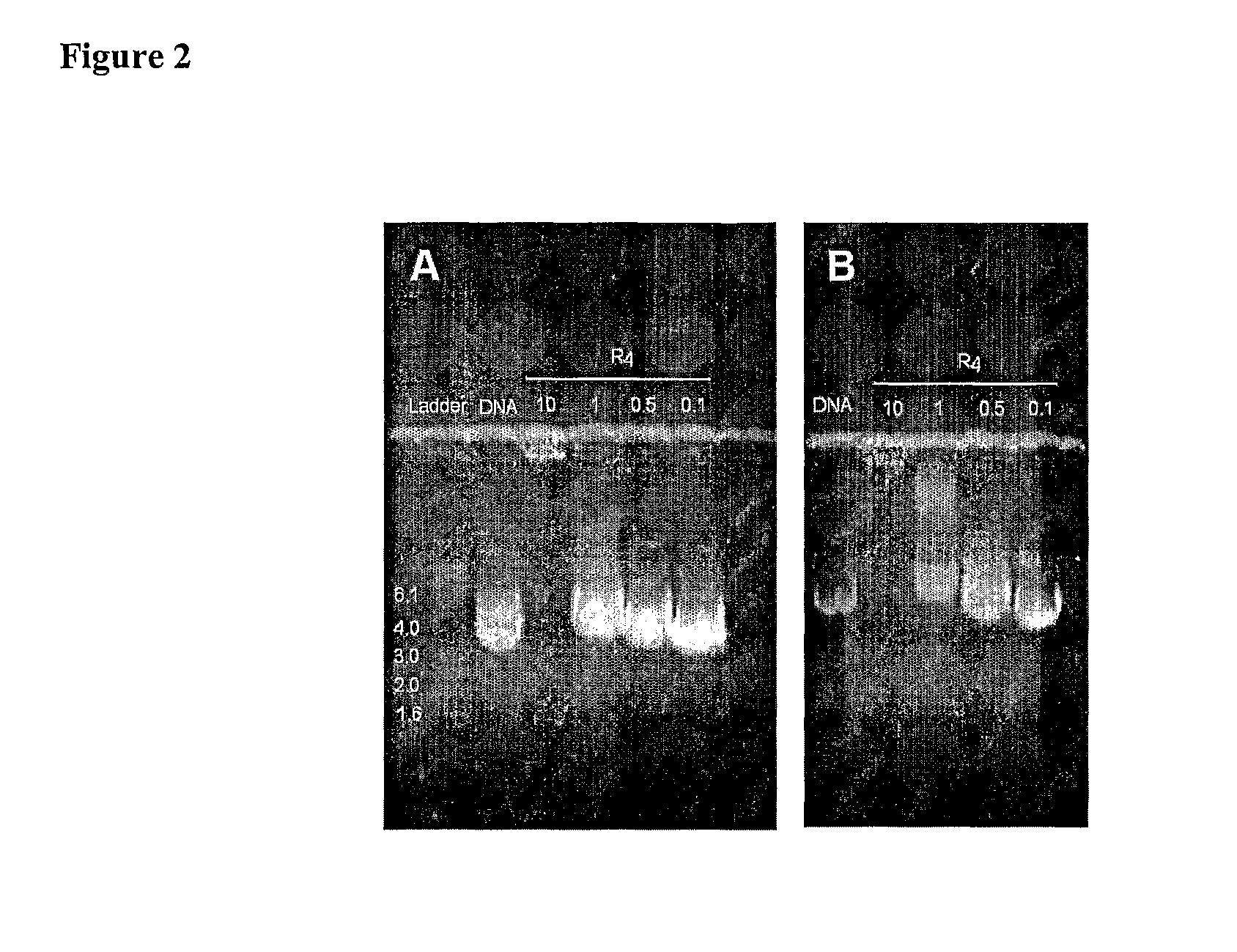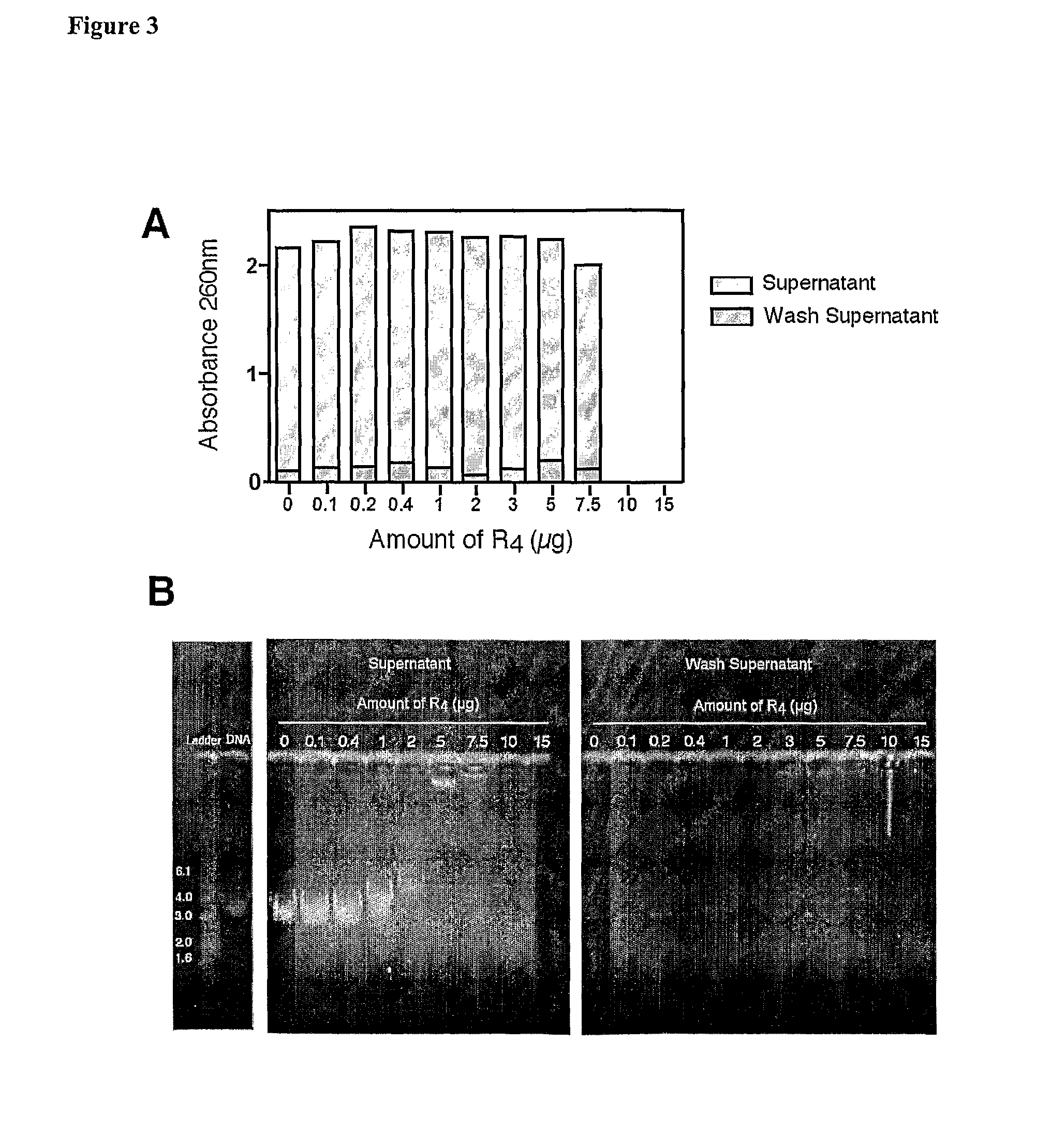Method of transfection and compositions therefor
a technology of transfection and composition, applied in the field of cell biology, can solve the problems of difficult non-viral vector transfection of dcs with relatively safe vectors,
- Summary
- Abstract
- Description
- Claims
- Application Information
AI Technical Summary
Problems solved by technology
Method used
Image
Examples
example 1
Synthesis of Cationic Peptides
[0083]Branched peptide constructs were synthesized by using lysine residues to provide the branching points of a scaffold template. Depending on the number of branch points present in the scaffold, di or tetra cationic structures were produced (FIG. 1). These branched constructs were synthesised on PEG-S RAM resin (Rapp Polymere, Tübingen, Germany; substitution factor 0.27 mmol / g). Fmoc-lysine(Mtt)-OH (Novabiochem, Läufelfingen, Switzerland) was first coupled to the resin in 4-fold excess with equimolar amounts of O-benzotriazole-N,N,N,N′,N′-tetamethyl-uronium-hexafluorophosphate (HBTU; Novabiochem, Darmstadt, Germany), 1-hydroxybenzotriazole (HOBt) and a 1.5-fold molar excess of diisopropylethylamine (DIPEA; Sigma, Castle Hill, Australia). Acylation was carried out for 40 minutes and complete reaction was confirmed by the trinitrobenzylsulfonic acid (TNBSA) test (21). Removal of the Fmoc protective group on the α-amino group was achieved with 2.5% diaz...
example 2
Retardation of DNA migration by R4
[0085]To investigate the association between the branched peptide R4 and DNA, a constant amount of DNA plasmid pEGFP-N1 or pCI-HA, which encode for green fluorescent protein and influenza HA protein respectively, were incubated with varying amounts of R4 and analysed by agarose gel electrophoresis (FIG. 2).
[0086]By increasing the amount of R4 in each sample, DNA migration could be affected. Partial retardation of DNA plasmid migration towards the anode, as visualised by ethidium bromide fluorescence, was evident when 0.1-0.5 μg of R4 was used whereas DNA samples incubated with higher amounts of R4 moved at a slower rate. Total retardation of DNA migration was achieved when 10 μg of R4 was present as evidenced by the appearance of a band of DNA at the origin. This band, however, appeared quite faint suggesting that there was little DNA in this sample. This may be due to: R4 inhibiting the binding of ethidium bromide to the DNA; and / or the interactio...
example 3
Formation of R4-DNA Complexes
[0087]In order to confirm the binding of R4 to DNA, the amount of DNA in the supernatant of centrifuged mixtures containing increasing amounts of R4 and DNA was determined by measuring the absorbance at 260 nm (FIG. 3A). The ability of R4 to precipitate DNA out of solution by neutralisation of its charge would result in less DNA in the solution and would therefore indicate an association between the two. It was found that the amount of DNA in the centrifuged supernatant did not vary dramatically when incubated with 0.1 μg to 5 μg of R4. A slight decrease, however, resulted when 7.5 μg of R4 was used and no DNA was detected in solutions containing more than this amount. This result indicates that the amount of R4 present is proportional to the precipitation of DNA out of solution. Absorbance readings were also taken on the wash supernatant used to resuspend any centrifuged insoluble material. The presence of little DNA in these samples suggests that the R...
PUM
| Property | Measurement | Unit |
|---|---|---|
| volume | aaaaa | aaaaa |
| temperature | aaaaa | aaaaa |
| flow rate | aaaaa | aaaaa |
Abstract
Description
Claims
Application Information
 Login to View More
Login to View More - R&D
- Intellectual Property
- Life Sciences
- Materials
- Tech Scout
- Unparalleled Data Quality
- Higher Quality Content
- 60% Fewer Hallucinations
Browse by: Latest US Patents, China's latest patents, Technical Efficacy Thesaurus, Application Domain, Technology Topic, Popular Technical Reports.
© 2025 PatSnap. All rights reserved.Legal|Privacy policy|Modern Slavery Act Transparency Statement|Sitemap|About US| Contact US: help@patsnap.com



